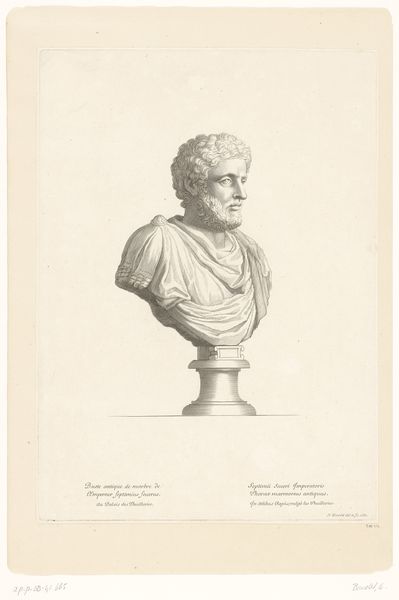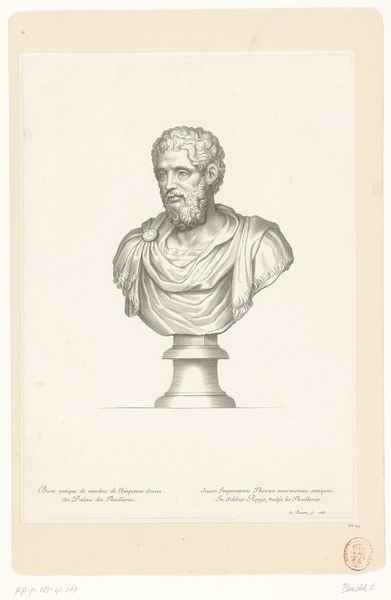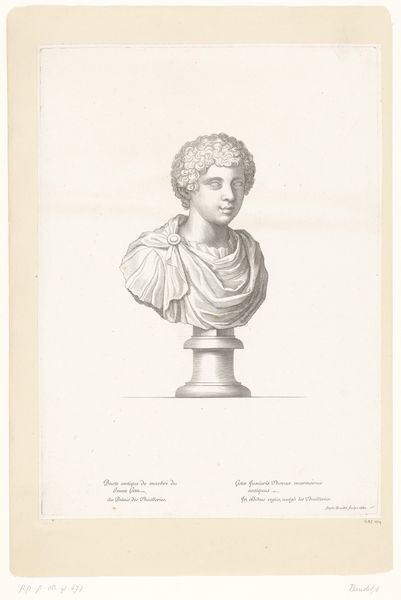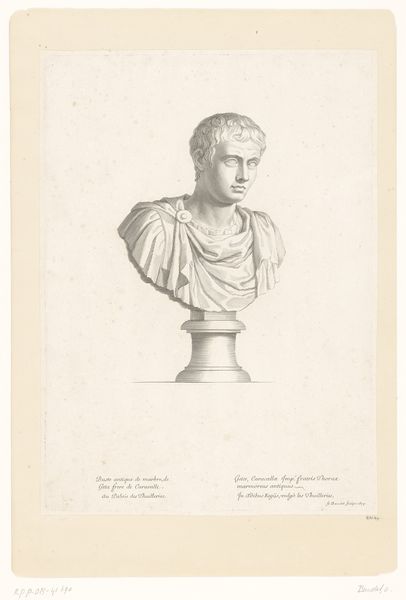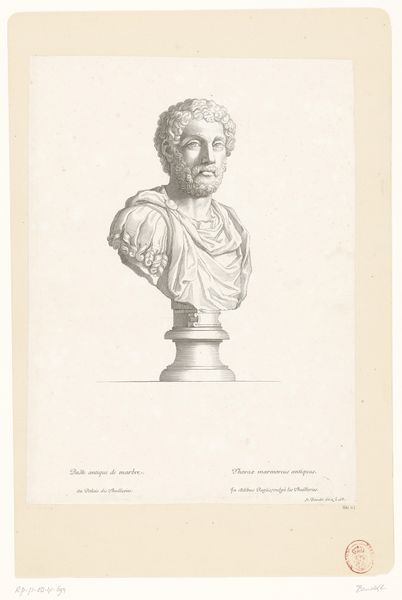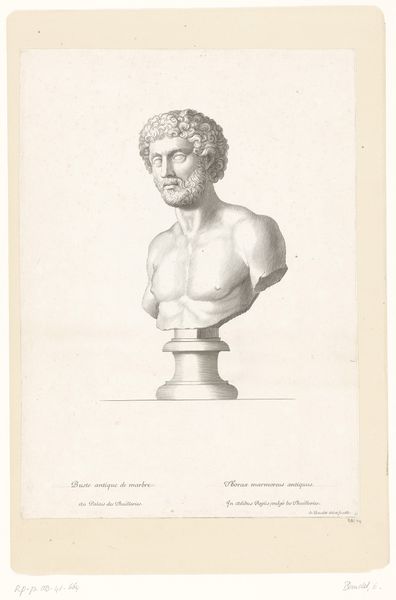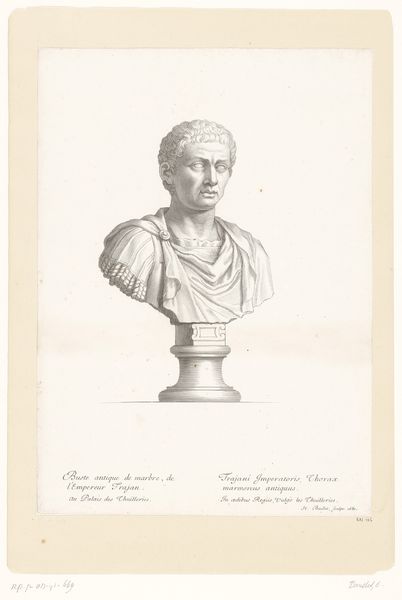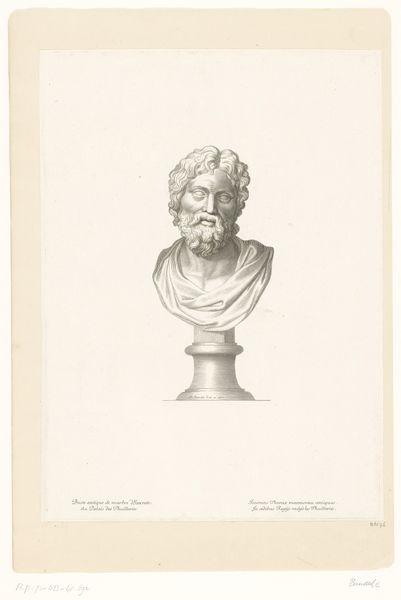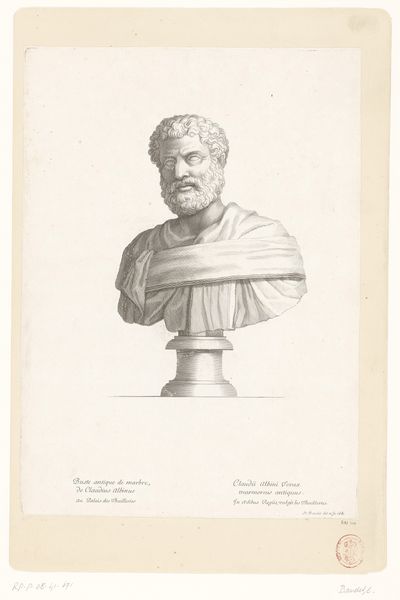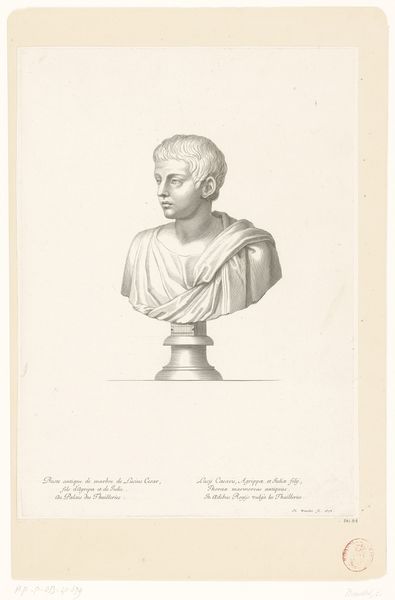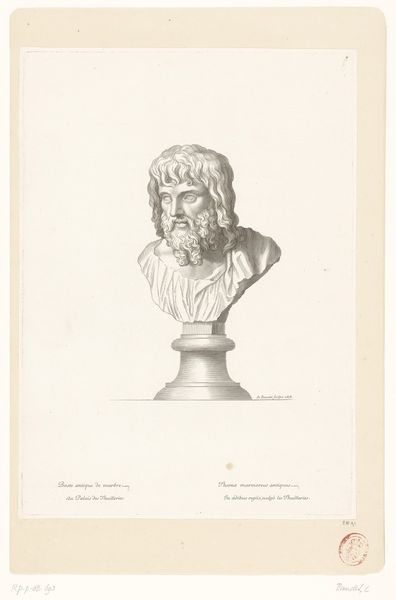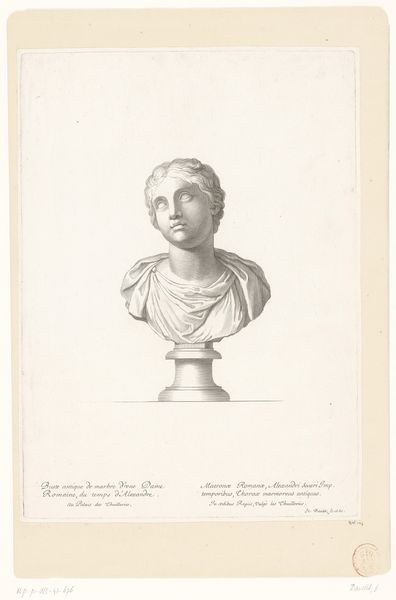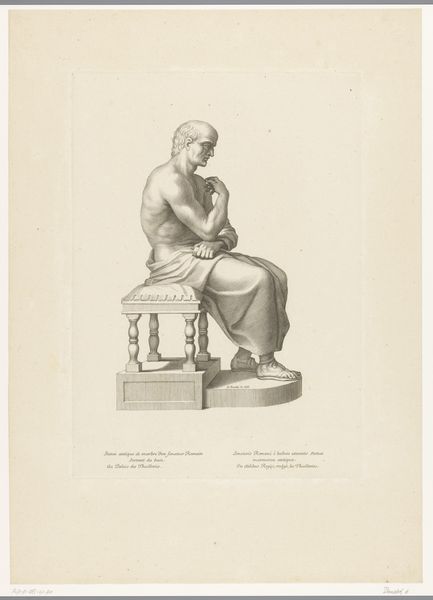
metal, bronze, engraving
#
portrait
#
baroque
#
metal
#
old engraving style
#
classical-realism
#
bronze
#
romanesque
#
history-painting
#
engraving
Dimensions: height 388 mm, width 279 mm
Copyright: Rijks Museum: Open Domain
Curator: The severe realism is striking. It immediately evokes an aesthetic of power and enduring authority. Editor: I agree. The way the material is rendered—likely a type of metal—suggests a fascinating relationship between artistic production and historical context. Let’s discuss Etienne Baudet's "Antique Bust of a Roman Consul" from 1679, a compelling engraving. Curator: The portrait, executed in a meticulously detailed Baroque style, presents an individual poised between classical realism and something altogether different. The incisive lines articulate the face with remarkable clarity, evoking a sense of gravitas. Observe the deliberate use of shading to model the features. Editor: Absolutely. And look at the engraving process itself. Metal engravings like this were complex, weren't they? Think of the artisan’s workshop, the painstaking labor involved, the consumption this piece encouraged as part of 17th century classicism's revival, as it became disseminated in print? The engraving process would affect distribution; metal lends a permanency to image making beyond sketching or painting, doesn't it? Curator: I agree that the engraving contributes to its permanence, but look at the subject’s garment, at the careful orchestration of drapery, so as to communicate not only rank but also character through codified symbolic forms. The figure's gaze confronts the viewer directly, forging an intimate and imposing encounter, don't you think? Editor: Certainly imposing, and the details of its crafting and the role those images had in solidifying cultural ideas of the "classical" in homes throughout Europe is fascinating, as this was not made for an elite art market. I like its usefulness. Curator: I am equally taken with how Baudet uses the engraving style to create an interplay between the Roman subject, and a French artistic movement that reinterprets Roman aesthetics. A testament to enduring artistry, that’s clear. Editor: Agreed. From a perspective rooted in materiality and historical process, Baudet’s print underscores how essential artisanal labour is for creating images.
Comments
No comments
Be the first to comment and join the conversation on the ultimate creative platform.
